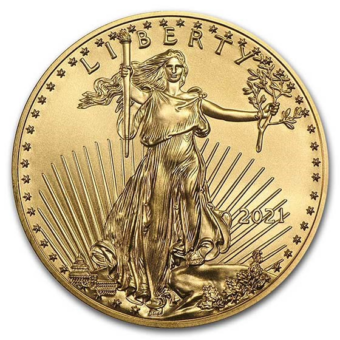A Daily Journey Through the Week's Market
Monday - 5.06.24: Gold and silver prices are notably higher in early U.S. trading on Monday, with June gold increasing by $20.50 to $2,329.10 and July silver rising by $0.70 to $27.39. This uptick is driven by a more optimistic risk sentiment in the marketplace, buoyed by stable geopolitical conditions and a balanced U.S. jobs report last Friday. Additionally, gold gains support from persistent central bank demand, often seen as a smart money indicator in the market. Key economic data releases for the day include the employment trends index and the global services PMI.
Tuesday - 5.07.24: The gold market saw a modest uptick, closing at $2,315.80 per ounce, marking a $1.90 increase for the day, with prices fluctuating between $2,306.80 and $2,325.30. Silver prices also slightly rose, ending the day at $27.32 per ounce after a $0.06 increase, and traded between $27.09 and $27.59. These movements reflect minor daily fluctuations typical in the precious metals market.
Wednesday - 5.08.24: Gold and silver prices have slightly declined in early U.S. trading on Wednesday due to chart adjustments and a lack of significant news. Influencing this downtrend are a stronger U.S. dollar and lower crude oil prices. Global stock indexes showed mixed results, and U.S. stocks are poised for a modestly lower open. In monetary policy news, Minneapolis Federal Reserve Bank President Neel Kashkari indicated a steady rate outlook, while Sweden’s Riksbank reduced its main interest rate by 0.25% to 3.75%. Meanwhile, despite a slowdown in purchasing pace, China’s central bank has continued to bolster its gold reserves, adding 1.9 metric tons in April.
Thursday - 5.09.24: Gold prices have strengthened this morning, with U.S. weekly jobless claims reaching a six-month high, pushing gold up to $2320.80, an increase of $11.95. Silver also rose by 51 cents, trading at $27.84. In South Korea, a notable trend in gold investment has emerged with sales of mini gold bars. These bars, ranging from 0.1 gram to 1.87 grams, are popular among consumers, particularly those in their 30s who make up over 41% of buyers. Available directly from stores and vending machines, these bars are indicating a rising interest in gold as a stable investment amid economic uncertainties.
Friday- 5.10.24: Gold and silver prices have reached three-week highs in early U.S. trading on Friday, climbing sharply as central banks show signs of easing monetary policies sooner than expected. This surge is bolstered by strong consumer and commercial demand. The optimism in market risk sentiment is further supported by recent U.S. economic indicators suggesting a cooling economy, which may prompt the Federal Reserve to lower interest rates. Additionally, global stock indexes are up, and the geopolitical climate, while still tense, has moderated from previous months.
Druckenmiller’s Scathing Review: Blames Biden and Fed for Inflation Woes
In a recent CNBC interview, billionaire investor Stanley Druckenmiller criticized President Joe Biden's economic strategies, giving them a failing grade and denouncing them as inflationary due to excessive government spending. Druckenmiller pointed out the Federal Reserve's role in exacerbating inflation by misjudging economic recovery signals and prematurely signaling rate cuts, which heated up financial conditions. He labeled this a strategic fumble, noting that while his firm benefited from the rising asset prices, the average American suffered from increased inflation. Druckenmiller expressed disillusionment with both Biden and potential presidential contender Donald Trump, fearing both would foster inflation through their policies. He nostalgically referenced his preference for Reagan-era policies, emphasizing free markets and anti-tariff measures, positioning himself as politically unaligned in the current landscape.
Legendary Investor Jim Rogers Foresees Soaring Gold Prices Amid Market Turbulence
Summary: Legendary investor Jim Rogers has made a bold prediction regarding the future of gold prices, suggesting they are poised to skyrocket. As tensions and instability continue to grip the global stock market, particularly due to conflicts in the Middle East, gold has started to attract heightened interest from various sectors including retail investors, institutional funds, and central banks from developing nations. According to Rogers, the precious metal, which has remained relatively dormant in price for nearly five years, is now gaining momentum. This trend is likely to surge further as more investors seek refuge in gold amidst growing uncertainties in the equity markets. Rogers, confident in his analysis, plans to hold onto his investments and possibly increase them if prices dip, indicating a strong belief in gold's upward trajectory through the end of 2024.
Delaying the Inevitable: Social Security's Doomsday Clock Pushed to 2035
The Treasury Department's latest update throws a temporary lifeline to Social Security, pushing its projected insolvency from 2034 to 2035 due to an unexpected economic uptick. But let's not kid ourselves—this is hardly a victory. Experts are sounding the alarm, urging Congress to stop kicking the can down the road and fix the impending financial disaster. Despite this small grace period, without serious intervention, by 2035 only 83% of Social Security benefits will be fundable. The stark reality is that the trust fund for retirement benefits is on a crash course for 2033, while the disability fund is sitting pretty until 2098, thanks to different fiscal dynamics. The clock is ticking louder than ever, and the window for preventing a cutback in benefits that could devastate millions is closing. It's high time for lawmakers to roll up their sleeves and hash out a solution that might involve tough choices like tax hikes or benefit cuts. Playing politics with people's future has to end. Now's the moment for bipartisan bravery—otherwise, we're just waiting for the whole system to implode.
Gold Over Dollars: BRICS' Strategy to Sidestep US Economic Influence
China's aggressive gold acquisition, highlighted by its purchase of over 300 tonnes in the last 18 months, is setting a trend among BRICS nations (Brazil, Russia, India, China, South Africa) to shift their reserves from the US dollar to gold. This strategic move, aimed at insulating their economies from potential US recessions, could significantly weaken the dollar's global standing. Financial experts speculate that this initiative could lead to de-dollarization, especially if BRICS and other developing nations decide to offload their dollar reserves in anticipation of or during a US recession. Such a shift could exacerbate the US's economic woes, potentially leading to hyperinflation and widespread economic instability as the reliance on the dollar diminishes globally.
The Looming Threat: Why U.S. Banks Are on the Brink
According to recent analyses, hundreds of small and regional banks in the U.S. may be at risk of failing due to a combination of strained commercial real estate loans and rising interest rates. Fitch Ratings, along with consulting firm Klaros Group, identified 282 banks that are particularly vulnerable, most of which are smaller institutions with assets under $10 billion. While these banks are not necessarily insolvent, they are under significant stress, which may result in them failing to meet their minimum capital requirements. The impacts of this situation could extend beyond bank failures, affecting communities and customers through reduced investments in new branches, technology, and staff. For individual depositors, the risk is mitigated by FDIC insurance, which covers up to $250,000 per depositor, ensuring that personal finances remain secure despite potential bank failures.
Rising Gold Prices Amid Central Bank Cuts and Global Tensions
Gold prices are experiencing an upswing as several central banks, including those in Sweden and the UK, signal a shift towards lower interest rates, coupled with geopolitical uncertainties and a rebound in Chinese trade. These factors reduce the opportunity cost of investing in gold, enhancing its appeal. Gold also gains support as a safe haven asset due to ongoing geopolitical tensions, such as the Israel-Hamas ceasefire stalemate and the situation in Ukraine. Additionally, economic data from China shows a recovery in exports, further influencing gold prices. Despite a mixed technical outlook, the broader trend in gold prices remains bullish, supported by its performance on medium to long-term charts.
Stagflation Alert: The Misguided Confidence of Economic Forecasters
Despite widespread economic theories to the contrary, the U.S. is facing the real possibility of stagflation—a situation where economic stagnation and inflation occur simultaneously. Critics of traditional economic models argue that current economic indicators, including stagnant growth and persistent inflation, are clear signs of emerging stagflation. The U.S. has seen below-average economic growth driven not by effective monetary policy but by unsustainable fiscal policies, leading to a ballooning national debt. Inflation has consistently hovered around 3.3% for months, fueled by factors such as rising oil prices and supply chain disruptions, including global geopolitical tensions and infrastructure failures. The prevalent economic models, like the Phillips curve, which suggests an inverse relationship between unemployment and inflation, are being challenged as they fail to predict or address the current economic reality. This situation indicates a systemic oversight by the Federal Reserve and Wall Street, suggesting that a reevaluation of economic fundamentals is overdue.
2024 Rate Cuts Unlikely as M2 Money Supply Surges
Bert Dohmen of Dohmen Capital Research argues that the significant increase in the M2 money supply indicates the Federal Reserve is unlikely to cut interest rates in 2024. Dohmen highlights the continuous rise in the non-seasonally adjusted M2, suggesting that despite official claims, the Fed is not effectively combating inflation. He draws parallels with the 1978-1980 inflation period, where similar patterns misled market participants. Dohmen predicts that the Fed's current predicament—financing large Treasury deficits while managing inflation—will prevent any reduction in rates. This situation is exacerbated by high Treasury debt sales, which he fears might eventually lead to market saturation and higher interest rates.
BRICS Readies New Currency as US Dollar Teeters on the Brink
In a recent statement, a Russian representative to the IMF has highlighted that the BRICS nations—Russia, India, China, Brazil, and South Africa—are advancing plans to introduce a new currency to potentially replace the US dollar in response to its possible collapse. This move is part of a broader effort by BRICS to decouple from the dollar due to perceived vulnerabilities in the global financial system. The new BRICS currency, which could be backed by tangible assets, is currently under discussion and could be activated if the dollar and the international monetary system fail. The bloc is also leveraging blockchain technology to create a robust digital payment system, indicating a strategic shift towards technological innovation in financial transactions. This initiative reflects growing support and expanding influence within BRICS, positioning it as a formidable contender in the global currency arena.
America's Savings Crisis and the Myth of Keynesian Prosperity
America's national savings rate has dipped to 3.20%, a troubling decline from the historical average of 8.47%. Concurrently, a staggering 36% of Americans now hold more credit card debt than emergency savings. Mainstream economists, viewing these trends through a lens of Keynesian economics, argue that this indicates economic vigor rather than distress, suggesting that high consumer spending—even if debt-fueled—is a sign of a healthy economy. However, this perspective is contested by those who see savings not as a relic of a bygone financial philosophy but as the foundation of a sound economy. The critique of modern economic policies highlights a neglect of savings and prudent financial management, which are essential for sustainable economic health. High levels of debt and low savings rates are not just indicators of personal financial risk but also signal broader economic vulnerabilities that could lead to severe consequences for the national economy. This critique calls for a reevaluation of policies that prioritize consumption over saving, arguing that true economic strength is built on the solid ground of savings and investment, not the shifting sands of debt and consumption.
Next Week’s Key Events
Monday, May 13
Tuesday, May 14
-
8:30 am: Producer Price Index (April)
Wednesday, May 15
-
8:30 am: Consumer Price Index (April)
-
8:30 am: U.S. Retail Sales (April)
-
8:30 am: Empire State Manufacturing Survey (May)
Thursday, May 16
-
8:30 am: Initial Jobless Claims (May 11)
-
8:30 am: Philadelphia Fed Manufacturing Survey (May)
-
8:30 am: Housing Starts (April)
-
9:15 am: Industrial Production and Capacity Utilization (April)
Friday, May 17
-
10:00 am: U.S. Leading Economic Indicators (April)
IMPACT ON PRECIOUS METALS MARKETS
Fed Speakers: Speeches from Fed officials can influence gold and silver prices through their comments on monetary policy, which may affect the U.S. dollar strength and investor sentiment towards safe-haven assets.
Producer Price Index (PPI): A higher than expected PPI suggests inflationary pressures, which could raise the appeal of gold and silver as hedges against inflation.
Consumer Price Index (CPI): Similar to the PPI, an increase in CPI is a direct measure of consumer inflation and can enhance the attractiveness of precious metals as a store of value.
U.S. Retail Sales: Strong retail sales might indicate a robust economy, potentially strengthening the dollar and pressuring gold and silver prices downward. Conversely, weak sales might lead to a softer dollar and boost precious metals.
Manufacturing Surveys (Empire State, Philadelphia Fed): These provide insights into the manufacturing sector's health. Positive data could bolster market optimism, reducing demand for safe havens like gold and silver, while negative data might increase their appeal.
Initial Jobless Claims: Lower jobless claims generally signal a strong labor market, potentially boosting the USD and negatively impacting precious metals. Higher claims might have the opposite effect.
Housing Starts: Indicates economic activity levels; higher housing starts can lead to stronger economic outlooks, potentially decreasing gold and silver appeal.
Industrial Production and Capacity Utilization: Increases in production and utilization can signal a strengthening economy, possibly lowering demand for gold and silver. Decreases can enhance their safe-haven appeal.
Leading Economic Indicators: This composite index forecasts future economic activity; higher readings might diminish the need for safe havens, whereas lower readings could increase demand for gold and silver.






















